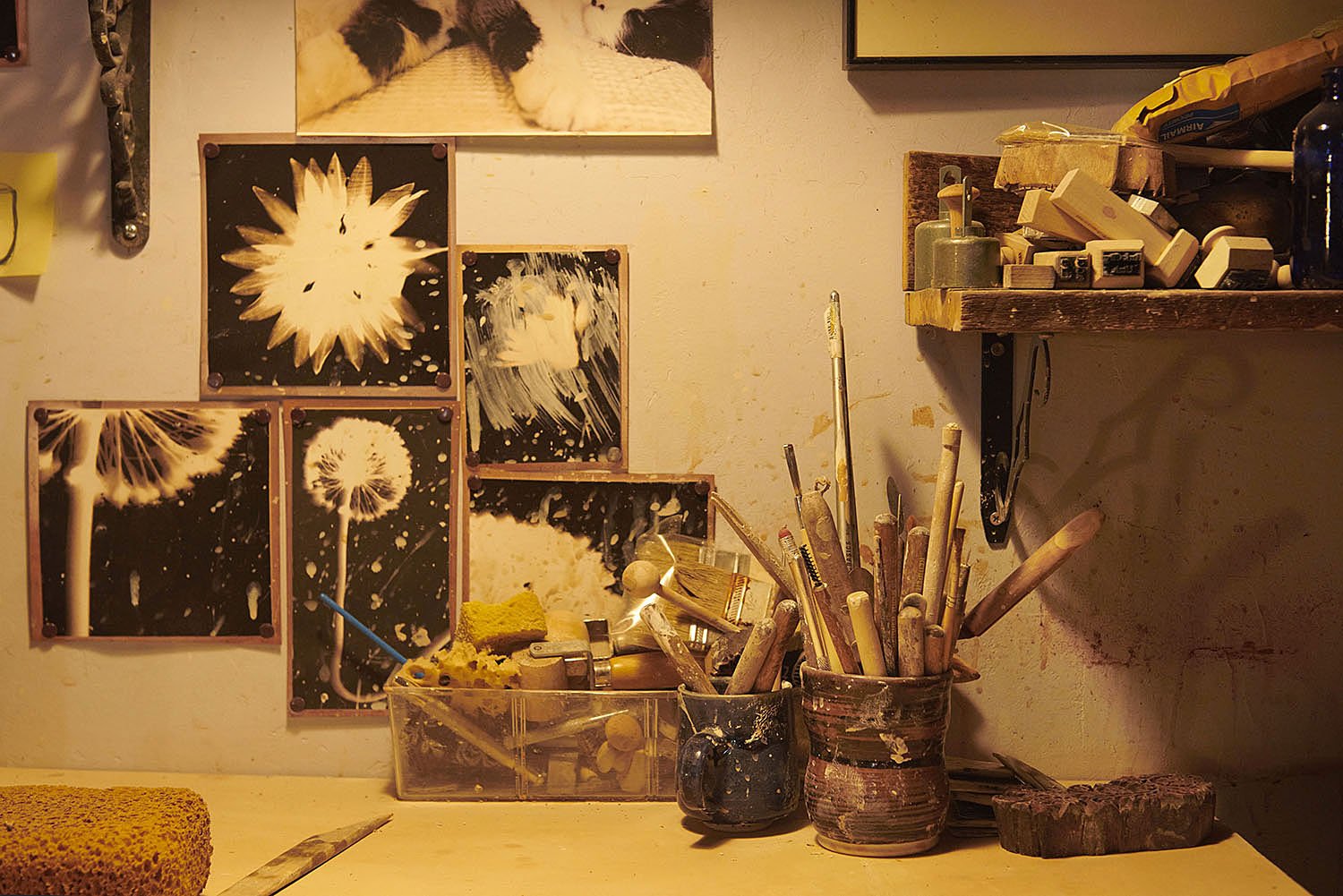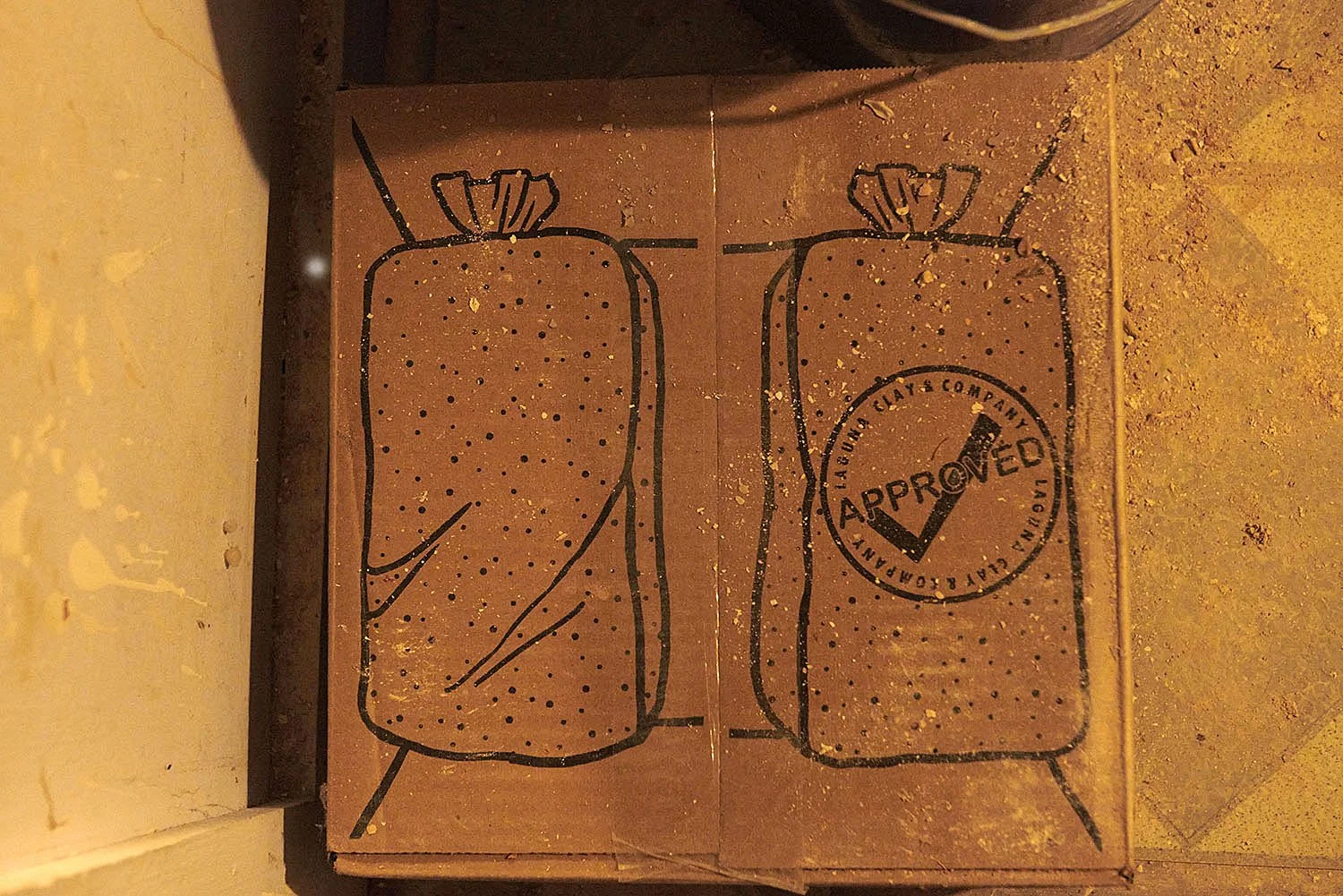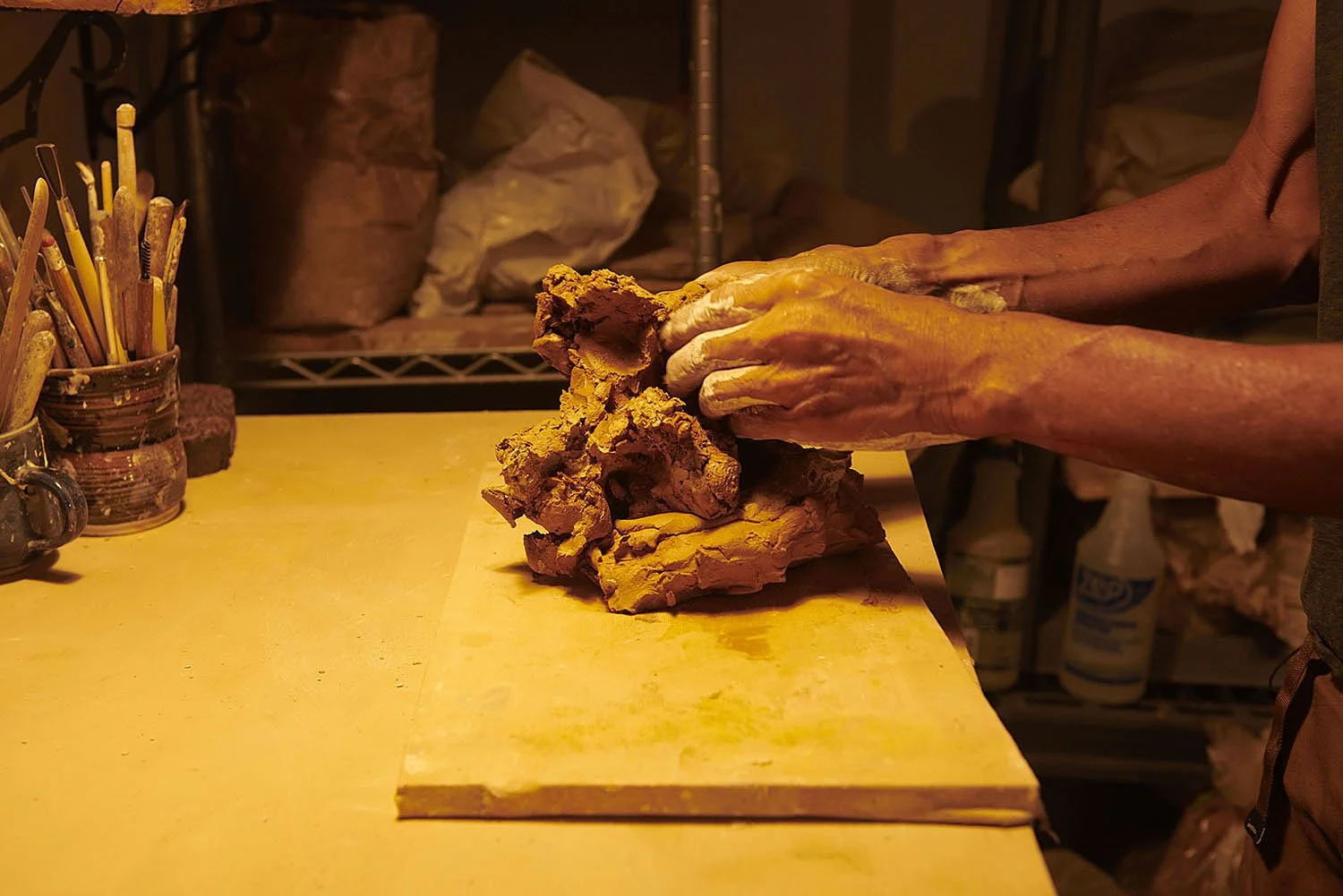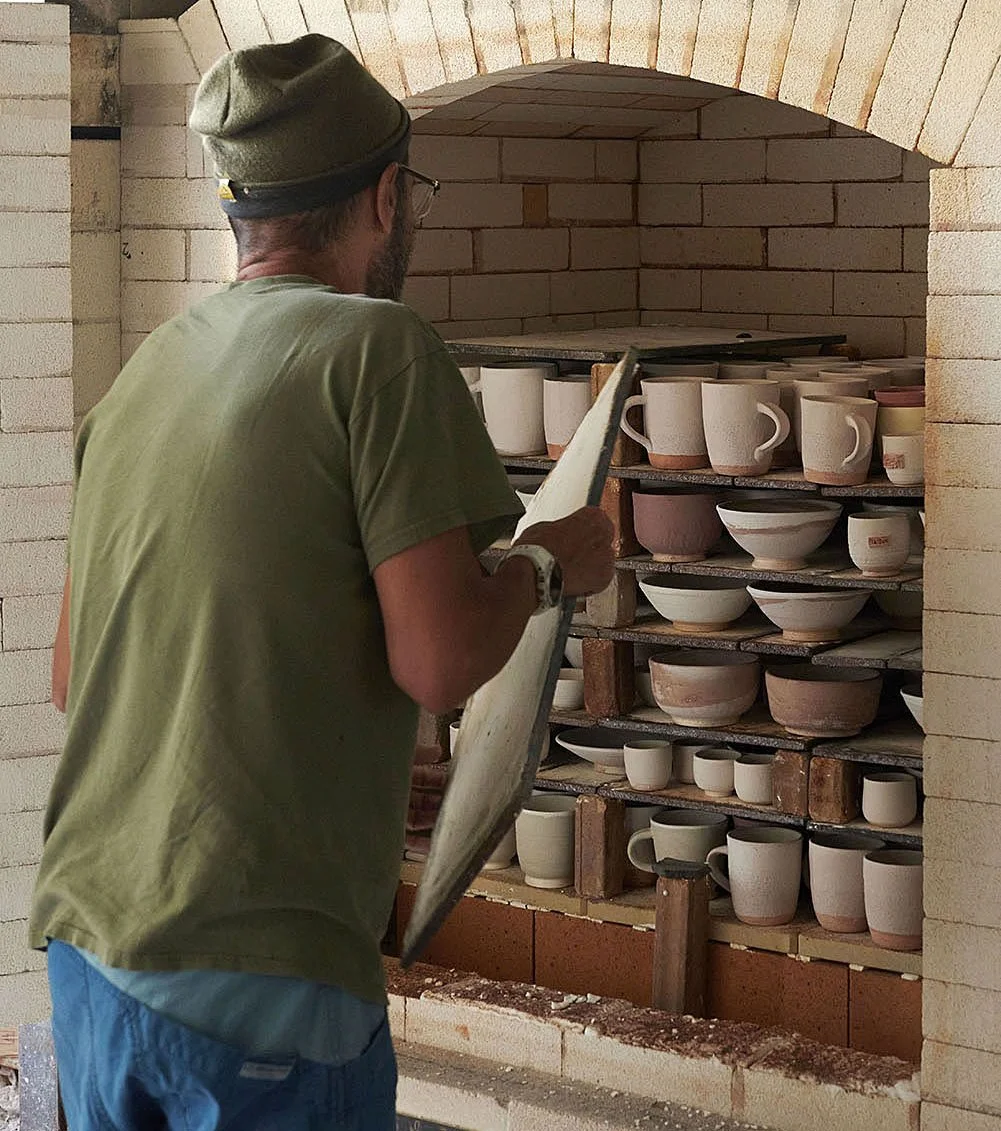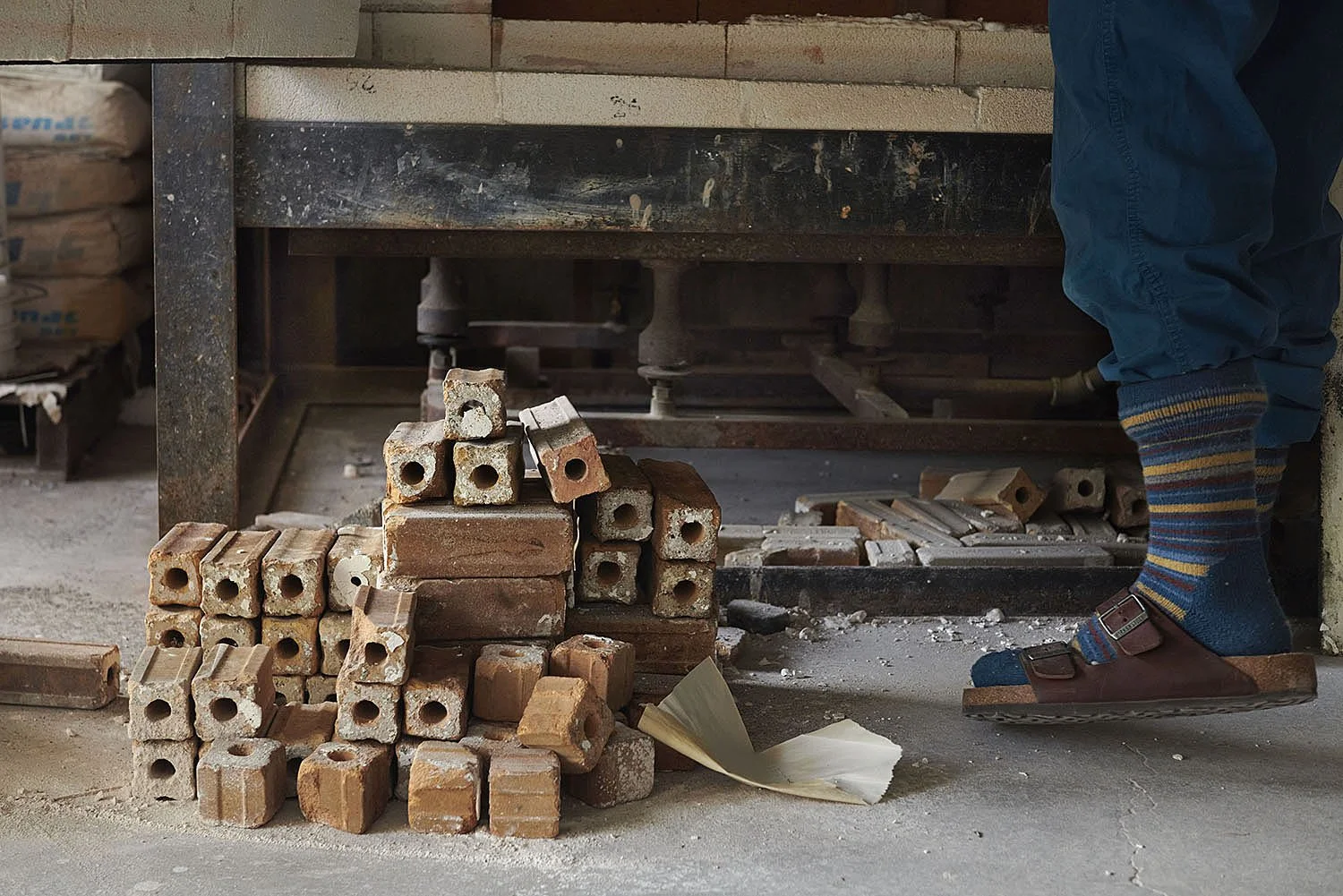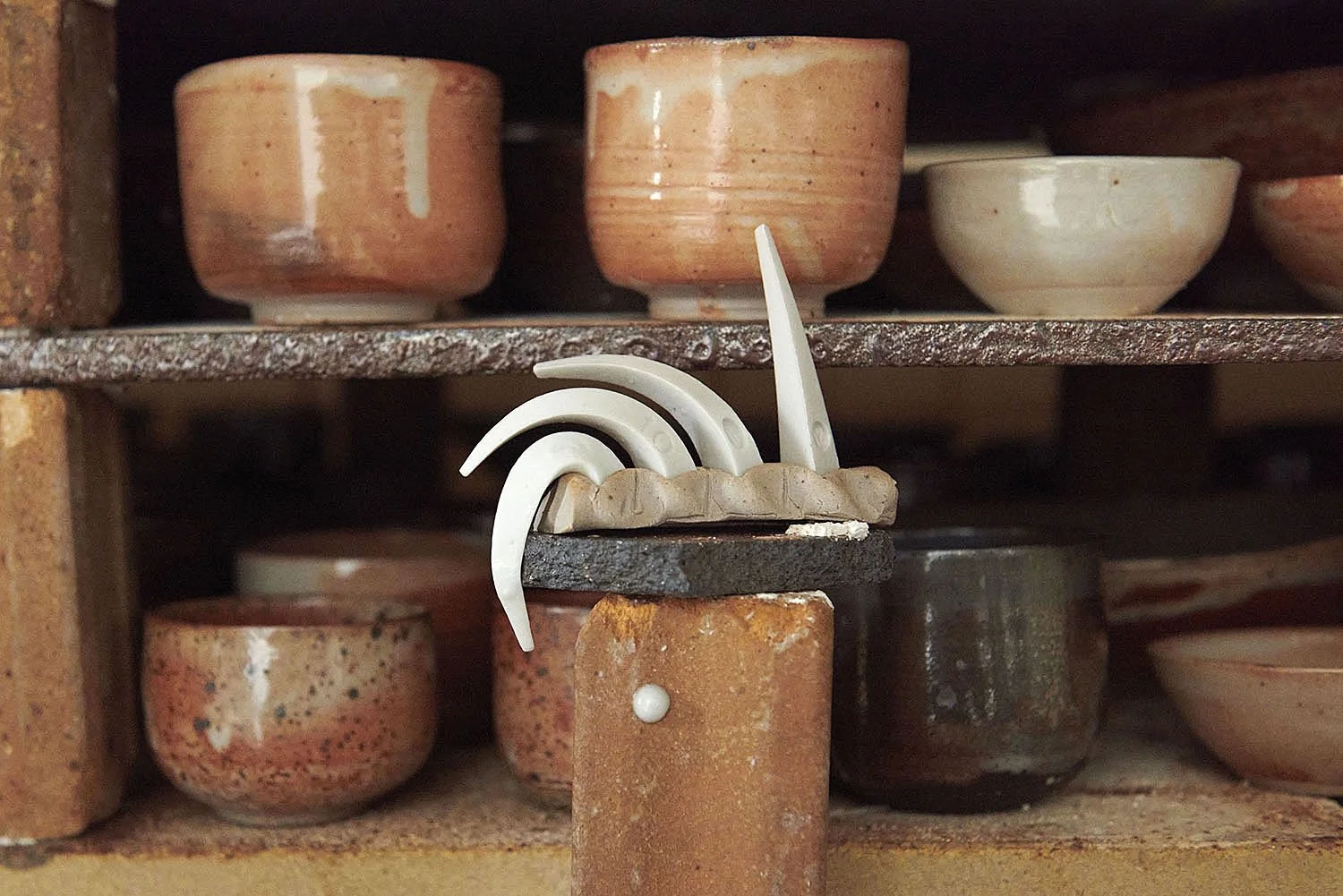Add Fire
Jesse talks with me about his Add Fire creations: “I make things that are new but I want them to look old, found. In the process of trying to capture one thing, I often find another.”
This is the story of Add Fire
A few years back I tried to throw clay on a wheel. The pottery teacher had to replace my clay ball four times because I kept destroying it. I was not in a good headspace at the time and the clay revealed this like nothing else had. I wore heavy boots while working a manual kick wheel. It was spinning slowly and erratically. I looked down and discovered that I was kicking with one foot and dragging my other foot on the surface, stalling the wheel. I removed the culprit and tried again. Everyone around me was already shaping pots. I was unable to respond to the clay, to guide it. I just squeezed it, too hard, over and over until I decapitated the rising cone.
My friend Jesse does not have this problem. He seamlessly melds pottery and chemistry. As he shapes the wet clay I see the symbolic representations of minerals floating, swirling around the clay like a genie released. In this ancient ritual of making, his hands, the colour of clay, are steady on the spinning creation until it emerges, complete. Jesse listens to jazz while he works. He beams and points into the air: “Bill Evans!”
I eat from Add Fire bowls every day but sometimes I just stop in the kitchen to notice them, such is their individual beauty.
Heading to Wyoming on the I-80, I have driven past the exit to Coalville many times but never visited the little town. Jesse fires his pottery in a kiln sheltered under a lean-to at Sunstone Pottery. I crunched gravel and coloured bits of broken pottery walking around behind the warehouse to meet Jesse, who was carrying open box after open box of glazed bisqueware to the kiln. I have known Jesse for years but never observed him so closely. The loading of the kiln took several hours and I found it almost impossible to watch, given my fear that something would break. Jesse hopped easily among the fragile shapes which were precariously stacked, tilted, almost falling, spread out all over the ground. He was wholly calm and focused on placing the pottery carefully into the kiln. I was in a state of spellbound jitters, asking: “What colour is that going to be?” And, “Oooh! How ‘bout that one?” All of the pieces were the colour of a pale moon. I could not conceive of the secret life inside each one, that would be brought out by the heat and swirling vapours (literally!)
I joined Jesse in his small studio to capture the ritual of selecting clay, adding grog to create a clay body, wedging the clay body and throwing it on the wheel to work the clay. I returned to document the glazing process and then met with Jesse to witness the magic of the kiln.
Jesse’s Van Dykes on the wall and an assortment of wooden modeling tools, potter’s trimming tools, clay stamps and stamping tools.
Pop Art on a box of unopened clay. Jesse experiments with different clays and combinations from discarded trimmings to produce varied colouration on the pots. He does not usually blend pure clays such as the expensive white porcelain clay. “I always read the clay analysis. Take vanadium. Vanadium in very low concentrations makes things yellow. A gorgeous, earthy yellow. That is the chemist in me.”
Jesse kneads the clay - in a process called wedging - to remove air pockets and achieve a consistent texture. He adds grog - large, heavy sand particles (relative to the clay) - for grittiness. This blend becomes the clay body.
Having slammed the clay body down onto the dry wheel, Jesse starts centering the spinning ball. He applies vertical pressure down onto the clay with his right hand to evenly match the horizontal pressure being applied by his left hand, to shape the clay into a disc.
Jesse cones the clay up and down several times to remove any final irregularities.
It is important that the clay conforms to the shape of the potter’s hand and remains centred on the wheel.
Potters add water to prevent friction between their hands and the clay. Jesse drips water onto the spinning clay with a sponge to keep it lubricated.
Jesse pinches the clay on either side, gently and evenly pulling up its walls to form the small cup. I asked him, “How do you experience this?” He answered, “I am imagining the space between my fingers. Very sensual. It is a way I connect with myself. How often do we hold our hands so close, almost touching, and look into that space?”
For efficiency, Jesse throws off the hump, meaning he makes multiple pots from the same lump of clay. Here he uses a wooden pot lift to separate the wet clay cup from the hump.
We take a stack of bisqueware bowls out under the Beech tree at Jesse’s home. These bowls have undergone a first firing in a small kiln to remove any chemically bonded water. The greenware bowls are now hardened to bisqueware but still porous enough to receive the glaze. Jesse explains, “We are basically coating the clay with ‘glass’.” Jesse’s approach seems sometimes intentional, sometimes experimental. Though every twist, dip and turn is steeped in deep knowledge, he loves the accidental spills and imprints.
Glaze is mostly alumina and silica with additional naturally occurring impurities such as iron oxides and manganese, mixed with water. Jesse also adds iron-rich ball clays to the glaze. “You have to ask,” he explains, “Do I want a lot of iron? Less? I am always considering the iron content in the clay body and glaze and manipulating it. That’s an art.”
After an hour of watching Jesse stack the kiln, I am struck as if by Thor’s lightning bolt: “There is going to be fire!” “Jesse, wait! Will we be able to see the flames?” Everything is a revelation to me. He explains that this updraft furnace reaches a tremendous, inconceivably high fire heat of 2,350° F and will fire the clay in a process that takes 12 hours. Join me inside my exploding brain: the heat of magma ranges from 1,292° to 2,372° F (700° to 1,300° C). The heat inside the kiln is hotter than molten lava in a volcanic eruption, and magma! (Except down in the earth’s mantle where it is hotter.) I just spent half an hour reading about volcanoes and found a photograph of a geologist sampling pāhoehoe lava at Kīlauea - where I have visited and seen actual spewing molten lava. Jesse explains that the fire heat has to ramp up and stays at its peak for an hour or so. He shows me the path of the flame, saying, “I use high fire clays and glazes so they can take the heat. Pieces react differently depending on where they are situated in the kiln.” Art and chemistry.
Jesse is lost in the chemistry, explaining the melting and fusing of the glaze to the clay body. He tells me how individual clay pots can influence the pots around them. He describes copper flashing: “Green glaze has copper in it. The heat melts the copper and a percentage of the copper vaporises. If a pot placed nearby can accept the copper vapour, it will accept it as a coppery red colour. The copper will flash onto an accepting glaze.”
Jesse lifts the heavy carbon shelf into the furnace chamber and places it on top of the posts. It is like watching someone pull a pick-up stick or Jenga piece, but in reverse: I am holding my breath, certain that at any moment the stack will collapse.
The ceramic posts are resistant to high temperatures and used to support the shelves. They are best stacked in a column to carry the weight. Posts of different lengths are used depending on the height of the pieces.
The kiln is full. It looks magnificent. Jesse stands back and says, “Everything you see here will be smaller.” And my eyes grow bigger. He explains: “When clay vitrifies, its crystal lattice structure changes with the added heat energy. The new structure resembles stacked, plate-like particles. This configuration allows for a non-porous surface. That’s why things shrink.”
It snowed during the night and is cold in the shed when I arrive. Jesse swings the heavy kiln door open and…
Lo! The fired pottery! Beautiful.
Pyrometric cones are placed within the kiln before the firing begins. Different cones are used depending on the intended heat and are calibrated to bend when a specific amount of heat energy has entered the system. Jesse can unplug and peek through the hole in the kiln door to view and measure the cone collapse. “The magic happens at cone 10,” he says.
Produce boxes loaded with stoneware. The gorgeous, earthy red is as a result of the iron oxides in the clay and in the glaze. Iron deposits also create the speckled effect. Jesse’s car is loaded and I head back to Salt Lake, trying to decide how many more Add Fire pieces I can fit in my cupboard.
I am my own fact checker, and some notes:
1. Keen observers might notice that the fired pottery reveal shows a different batch of stoneware. I hoped to return to capture a genuine before and after, but was unable to.
2. Thanks to Kevin for helping me decide which lightning bolt thrower to feature: Zeus or Thor
3. The volcano I reference experiences effusive eruptions and not pyroclastic eruptions.
4. Jesse Canales of Add Fire is a potter, chemist, and photographer. Thank you, Jesse, for your collaboration. I had so much fun!
5. Thanks to Jim Simister, founder of Sunstone Pottery Supply, for welcoming me when I photographed the kiln segments.
6. I watched several excellent videos by Florian Gadsby, starting with How to Center Clay - A Beginner’s Guide
7. I was sidetracked by: Volcano Watch - Magma: What’s hot and what’s not Hawaiian Volcano Observatory, November 9, 2017


